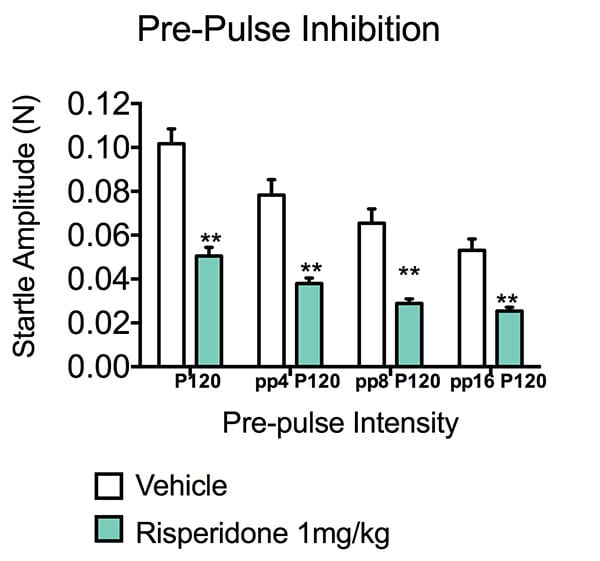Startle Prepulse Inhibition (PPI)
Discover how Melior’s unique phenotypic screening platforms can uncover the untapped value of your candidate therapeutic
Many neurological disorders have been linked with deficits in sensorimotor gating such as schizophrenia, obsessive compulsive disorder, post-traumatic stress disorder, Alzheimer’s disease, Tourette’s syndrome, and Huntington’s disease.
Sensorimotor gating can be modeled using tests of prepulse inhibition. Prepulse inhibition (PPI) is the ability to inhibit the reaction of a subject to a strong startling stimulus (pulse) with a weaker pre-stimulus (pre-pulse).
This model is designed to identify pharmacological agents that disrupt sensorimotor gating in normal animals and pharmacological agents that improve sensorimotor gating in affected animals. Most commonly the Startle Prepulse Inhibition (PPI) model is considered a model of schizophrenia. Risperidone and haloperidol are drugs used to treat schizophrenia and are used to validate the assay.
The study described below illustrates the validation of our Startle PPI model using risperidone as a validating agent.

A significant reduction in startle amplitude was found in mice treated with risperidone (Risperdal®) compared to mice treated with vehicle. Data are mean ± SEM; **p<0.01 compared to vehicle n=9-11.
The Startle Prepulse Inhibition model is an acute model (one day) typically used to evaluate a compound after a single administration. Ideal group sizes are 10-14 animals.



 Interested in running a Startle Prepulse Inhibition (PPI) study?
Interested in running a Startle Prepulse Inhibition (PPI) study?